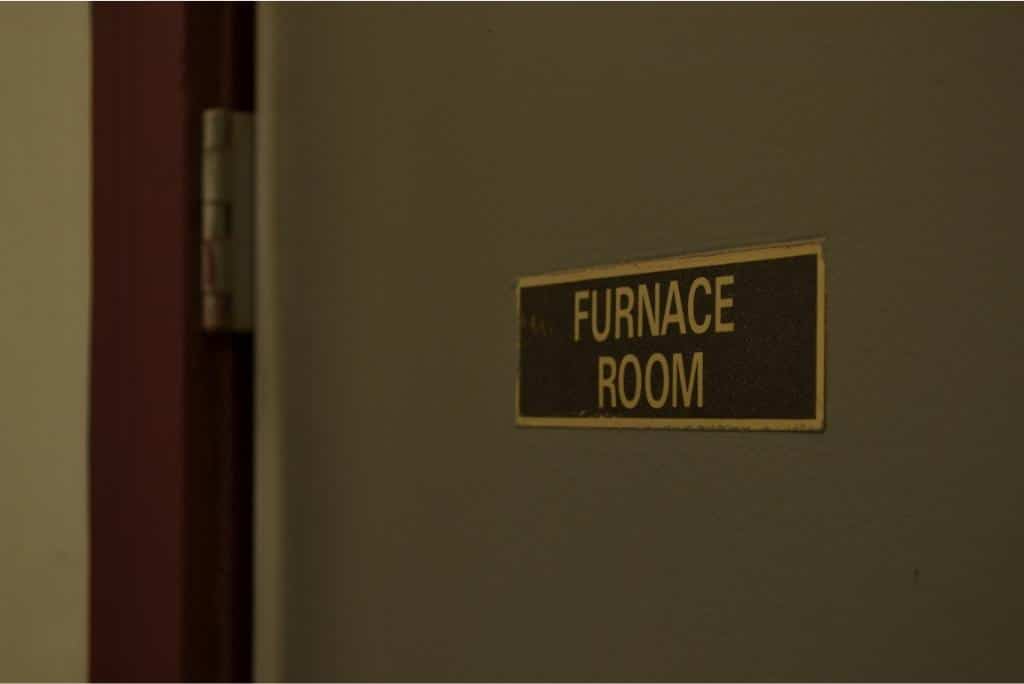
Choosing the right covering for your HVAC unit is something that homeowners and builders often fail to consider. It’s not until that standard hollow core door or dated louver door is installed that you realize you should have given it more thought.
When coming up with HVAC closet door ideas, keeping your HVAC unit running safely and efficiently should be your prime consideration. Next, you want to think about aesthetics or any other particular circumstances. If you’ve been racking your brain for furnace room door ideas, read on. This article has you covered.
HVAC Closet Door Requirements
Many of the critical requirements that must be addressed concerning HVAC units, AC units and furnaces have more to do with the closet they sit in than the door. If you are building a new home or relocating a unit to a new location, you need to know local building codes as well as the installation requirements for the particular unit you are using.
When it comes to choosing a door to enclose your HVAC unit, there are two essential considerations.
Ventilation
Whether your utility closet contains an HVAC unit, a furnace, an AC or a water heater, providing adequate airflow is critical.
If your unit burns fuel to function, you must look at furnace room door ideas that are vented and allow for fresh air to flow freely from your home into the utility closet. Even if combustion air intake is provided through exterior vents, it is highly recommended that utility closets containing gas units provide additional venting.
Electric units and many HVAC or AC units do not need the ventilation provided by louvered or vented closet doors. It is important to know whether the unit uses the door for air intake. If it does, you will need to choose an air conditioning closet door that allows for this function.
Adequate Space
Depending on the type of unit you have in your utility closet and building codes, there will be space requirements that dictate how close the closet door can sit to the face of the unit. If you hope to replace a thin louvered door with a thicker door, you need to make sure that the difference in door thickness does not infringe on these requirements.
It is also essential that you look at the width of your door. Ideally, the door to your utility closet will be at least 2 inches wider than your HVAC unit on both sides. This will allow for efficient removal of the unit in the future.
Recommended: HVAC License Requirements: State-by-State Directory
Additional Considerations for HVAC Closet Door Ideas
Once you have ensured that your HVAC closet door ideas align with ventilation and space requirements, you can begin to address less critical considerations.
Door Size
It isn’t uncommon for utility closet doors to be half-doors with an intake grate below. Replacing these doors will require some creativity.
If the door is of standard width, you can simply remove the excess height from a regular door and install it. You can also consider combining the air intake and door into a single door with a vented bottom half.
Soundproofing
Most modern HVAC units function quietly, but if your closet sits close to a bedroom, you may want to look into adding acoustic panels to the back of the door. You can also change a hollow core door to a solid door or an insulated exterior door to get an immediate sound reduction.
Space
Utility closets are often situated in tight spaces such as a hallway in your home. Using a standard, hinged door that swings open into the hall or room may take up space you don’t have.
In these situations, bifold doors can provide a cost-effective solution. Alternatively, you can use some form of a sliding barn door.
Aesthetics
For HVAC professionals, this is often the least important aspect when considering HVAC closet door ideas; however, for homeowners, it is essential. Ask yourself whether you want your air conditioning closet door to blend in with the rest of your decor, or if you want to use it as a design accent.
The easiest way to blend your closet in is to choose a door that matches the other doors in your home. Even if you’re looking at furnace room door ideas and venting is necessary, you may be able to alter a standard door to provide the airflow you need.
If the closet is not easily hidden, the best choice may be to let it stand out. Pass on a typical door altogether, and get creative with finishes and materials.
AC and Furnace Room Door Ideas You’ll Love
As long as you have adhered to any safety requirements for your HVAC unit, you can let your creativity take the lead when considering HVAC closet door ideas.
1. Chalkboard
If your utility closet is in the vicinity of your kitchen, any door can be transformed with a bit of chalkboard paint. Your closet door can become a family hub that holds your activity calendar, to-do lists, or menu ideas.
2. Barn Doors
This is a space-saving idea that will not protrude into cramped spaces when open and can be constructed in any size and in any style. This can be a great option for replacing closet doors that don’t fit standard door sizes.
3. Artistic Barn Door
A barn door doesn’t have to be an actual door. Large pieces of art, intricate metal panels, and die-cut wood panels can all be hung on barn door fixtures. These are great choices if you’ve decided to let your HVAC closet door stand out.
4. Caning
For utility rooms that need extensive ventilation, using caning can add a classic style that is unique. You can DIY your old louvered doors by removing the wood slats and replacing them with caning yourself.
5. Upgrade the Louvers
A classic louvered door remains the best solution for utility rooms that need full ventilation. You may find that upgrading from a builder-grade louvered door to a high-end construction can look rich and traditional.
In summary, your choice of an HVAC closet door should always be guided by safety requirements first; but beyond that, your options are nearly limitless. Consider your style and available space and choose a door that serves its purpose while being aesthetically pleasing.
Source: US Inspect
